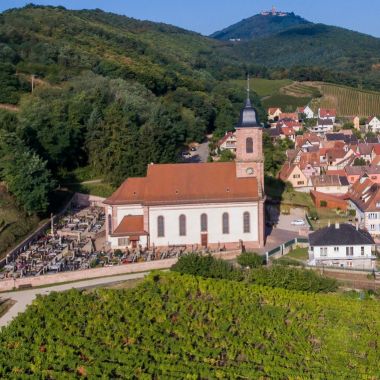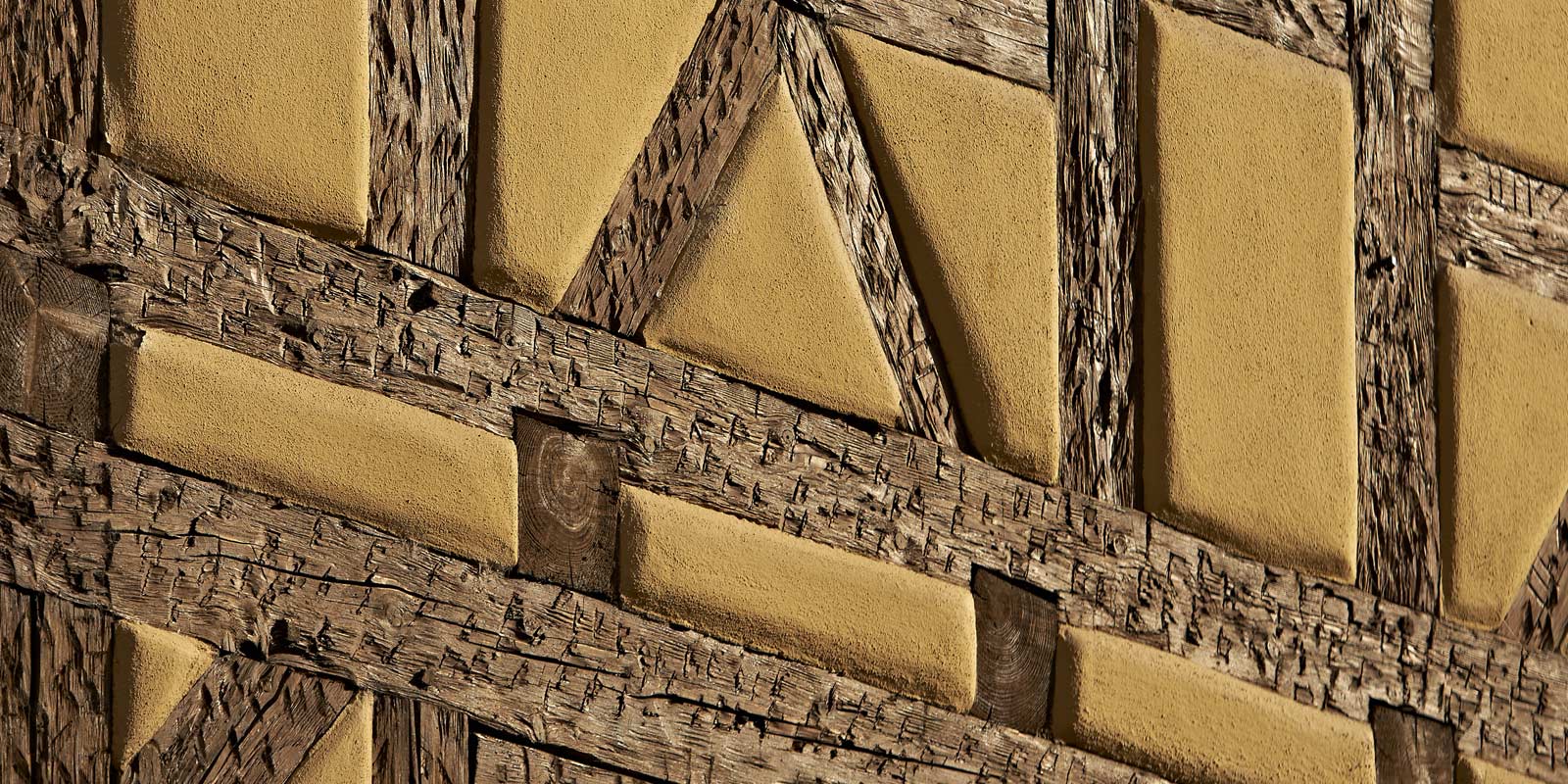Description

Visible from afar with its long white façade, the church of St. Maurice in Orschwiller stands out clearly against the wooded slope of the Langenberg massif.
This neo-classical building from the end of the 18th century, designed by the architect Christiani, consists of a bell tower, a single nave and a polygonal choir set back, in accordance with the usual layout of the time.
On the small promontory behind the church, an orientation table allows you to discover an exceptional landscape.
The church was restored several times, but was demolished in 1780 as it was too small for the village.
In 1779 the foundation stone of the present church was laid. For its construction, some of the materials from the old building were used, as well as the inexhaustible sandstone mine in the ruins of Haut-Koenigsbourg. The church was completed in 1781 with its imposing 42-metre high façade.
The interior of the church was completely restored after the fire of 1985. It houses various paintings and statues of real artistic value.
In the choir, you can admire the carved lectern, decorated with the symbols of the four Evangelists. This masterpiece was made by the sculptor Arsène Schirm from Orschwiller. Behind the high altar, note one of the rare paintings by the painter Simon Gasser, of excellent workmanship: the Ascension of Saint Maurice (1803).
The ceiling of the nave features a work by Strasbourg artist Sylvie Lander, "Heaven", created in 2011 thanks to popular sponsorship - oil on canvas mounted on wood and gold leaf in an ellipse measuring 30 m². It is accompanied by an "Angel".
The church got its first Birganztle organ from Ammerschwihr in 1805. In 1852 it was replaced by a Stiehr-Mockers from Selz. At the end of the century, its playing was romantised. An opening in the bell tower was necessary to accommodate the enlarged organ. In the 1985 fire, the front of the instrument was badly damaged and many pipes melted. It was restored to its original condition by the Mulheisen factory in Cronenbourg.
The building has been listed as a historical monument since 1986, and classified as a historical monument since 1987.
The organ, listed as a historical monument, was restored in 1988 following a fire in the church.
More information
- On a cycle route (less than 5 km)
- On the GR 5 route (less than 2 km)
- Chemin des châteaux forts d'Alsace















